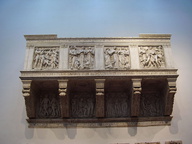Davide Balula. Iron Levels

Davide Balula, Irons Levels, 2017 | © Davide Balula / Gagosian
Dal 21 September 2017 al 2 December 2017
Roma
Luogo: Gagosian Gallery
Indirizzo: Via Francesco Crispi 16
Orari: Mar - Sab 10.30 - 19
Costo del biglietto: Ingresso libero
Telefono per informazioni: +39 06 42086498
E-Mail info: roma@gagosian.com
Sito ufficiale: http://https://www.gagosian.com
«Sono affascinato dalla strumentazione e dalla tecnologia in generale… Credo nell’idea di un corpo ‘prolungato’. Sappiamo così poco, percepiamo così tanto.» Davide Balula Gagosian è lieta di presentare, giovedì 21 settembre 2017 (inaugurazione dalle 18 alle 20), Iron Levels, una mostra di nuove opere dell’artista francese Davide Balula (Annecy, 1978). Surreale, spiritoso e impegnato, il lavoro di Balula esamina l’interrelazione tra filosofia, fenomenologia e fisica. Per la sede romana della galleria Gagosian, l’artista ha creato uno speciale percorso esperienziale, intimamente connesso con l’architettura dello spazio. Davide Balula è nato nel 1978 ad Annecy, Francia e vive e lavora tra New York e Parigi. Il suo lavoro è incluso nelle collezioni del Centre Georges Pompidou, Parigi; Musée National d’Art Moderne, Parigi; Fonds National d’Art Contemporain, Parigi; Musée d'Art Contemporain du Val–de–Marne, Vitry–sur–Seine, Francia; Fonds Régional d’Art Contemporain Poitou–Charentes, Francia; e Fonds Régional d’Art Contemporain Provence–Alpes Côte d’Azur, Francia. Tra le personali recenti si annoverano : “Sirène du Mississipi”, Musée de l'Objet, Blois & Ecole des Beaux Arts de Châteauroux & Bourges, Francia (2007); “Endless Pace”, Museums Quartier Vienna, Austria (2007); e “La main dans le texte”, Prix Marcel Duchamp, FIAC, Parigi (2015). Balula parteciperà alla prossima Biennale de Lyon nel settembre di quest’anno.
SCARICA IL COMUNICATO IN PDF
COMMENTI

-
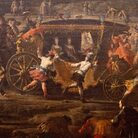 Dal 20 December 2025 al 20 April 2026
Caserta | Reggia di Caserta
Dal 20 December 2025 al 20 April 2026
Caserta | Reggia di Caserta
Regine: trame di cultura e diplomazia tra Napoli e l’Europa
-
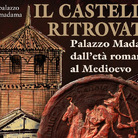 Dal 19 December 2025 al 23 March 2026
Torino | Palazzo Madama - Museo Civico d’Arte Antica
Dal 19 December 2025 al 23 March 2026
Torino | Palazzo Madama - Museo Civico d’Arte Antica
Il castello ritrovato. Palazzo Madama dall’età romana al medioevo
-
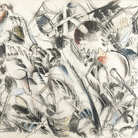 Dal 17 December 2025 al 19 January 2026
Roma | Palazzo della Cancelleria
Dal 17 December 2025 al 19 January 2026
Roma | Palazzo della Cancelleria
De Humana Mensura di Linda Karshan
-
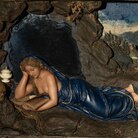 Dal 18 December 2025 al 12 April 2026
Firenze | Gallerie degli Uffizi
Dal 18 December 2025 al 12 April 2026
Firenze | Gallerie degli Uffizi
Cera una volta. Sculture dalle collezioni medicee
-
 Dal 11 December 2025 al 9 April 2026
Firenze | Museo Archeologico Nazionale di Firenze
Dal 11 December 2025 al 9 April 2026
Firenze | Museo Archeologico Nazionale di Firenze
Icone di Potere e Bellezza
-
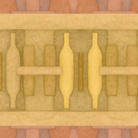 Dal 11 December 2025 al 11 January 2026
Roma | Palazzo Esposizioni Roma
Dal 11 December 2025 al 11 January 2026
Roma | Palazzo Esposizioni Roma
Giorgio Morandi nella Collezione Eni. Un viaggio attraverso la storia culturale del cane a sei zampe e l’eredità di Enrico Mattei
